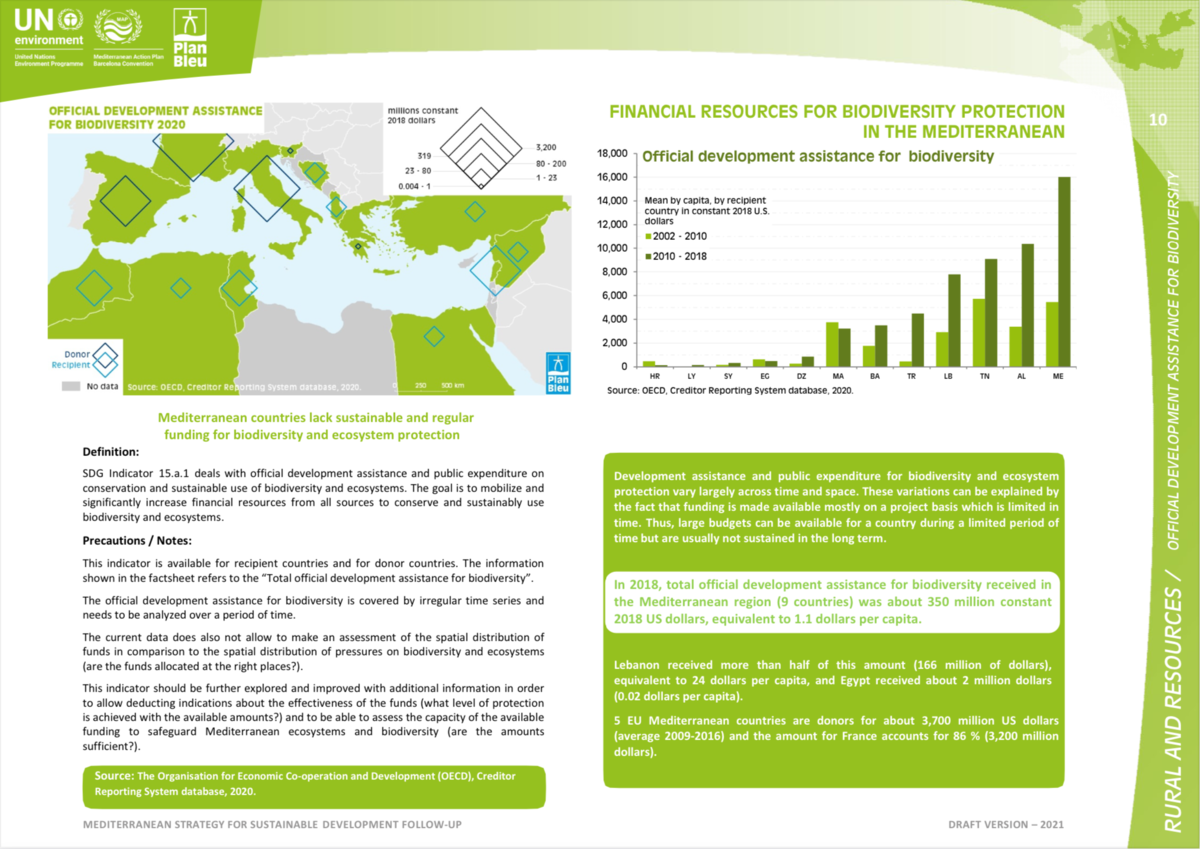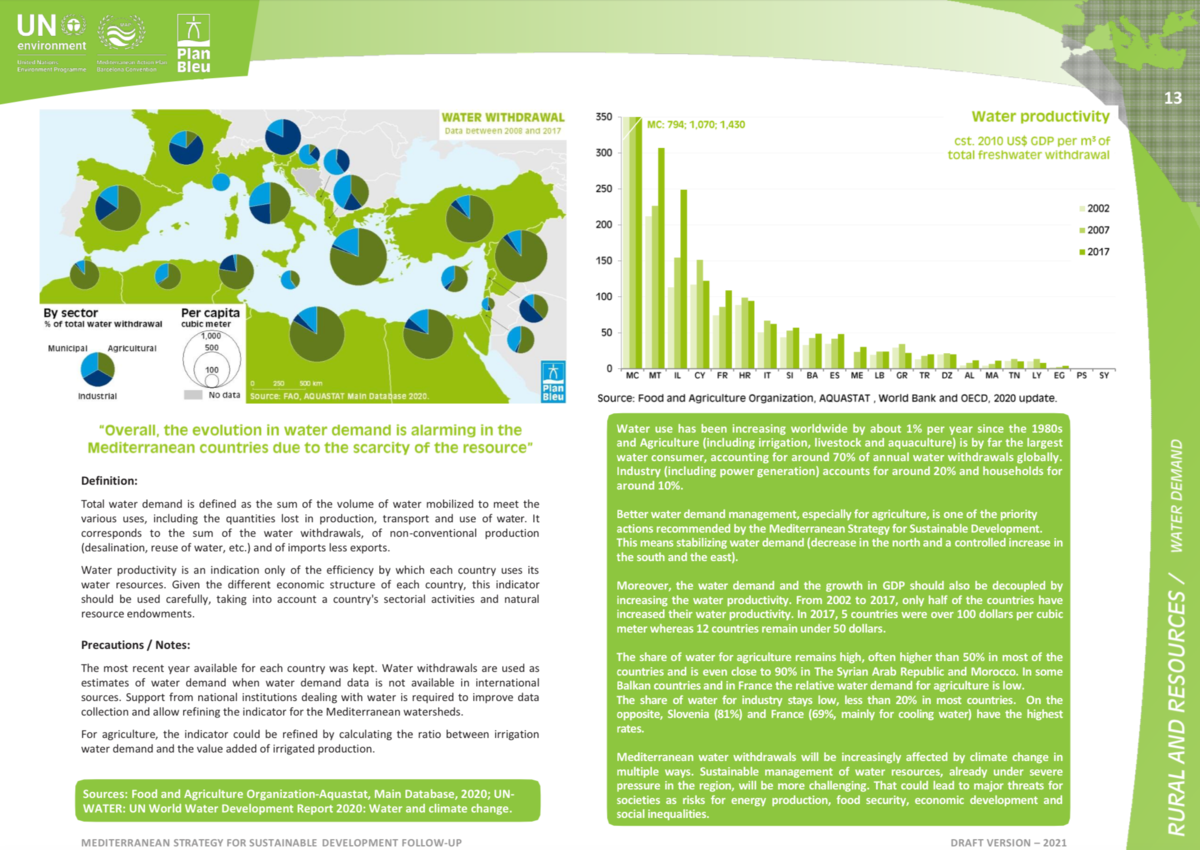Rural & Resources
Official development assistance and public expenditure on conservation and sustainable use of biodiversity and ecosystems (SDG Indicator 15.a.1)
This indicator deals with official development assistance and public expenditure on conservation and sustainable use of biodiversity and ecosystems. The goal is to mobilize financial resources from all provenances and increase them significantly to preserve biodiversity and ecosystems and use them sustainably.
Level of water stress: freshwater withdrawal as a proportion of available freshwater resources (SDG Indicator 6.4.2)
The level of water stress (according to the SDG Indicator 6.42) corresponds to freshwater withdrawal as a proportion of available freshwater resources is the ratio between total freshwater withdrawn by all major sectors and total renewable freshwater resources, after taking into account environmental water requirements.
Proportion of population using safely managed sanitation services (SDG Indicator 6.2.1)
This indicator represents the share of the population with access to a basic sanitation system for the disposal of human excreta in the home or in the immediate vicinity (public sanitation network, septic tank, etc.). This is an Indicator of the Millennium Development Goals (n ° 31) and it has been proposed for the Horizon 2020 initiative.
Proportion of population using safely managed drinking water service (SDG Indicator 6.1.1)
This indicator represents the proportion of the population that is served or has reasonable access to an adequate volume of drinking water. “Access” assumes a source producing at least 20 liters per capita per day and located within 1000 meters. (Indicator of the Millennium Development Goals n ° 30).
Red List Index (SDG Indicator 15.5.1)
The Red List Index represents an index of aggregate survival probability (the inverse of extinction risk) for all birds, mammals, amphibians and corals occurring within the region, weighted by the fraction of each species’ distribution occurring within the region.









